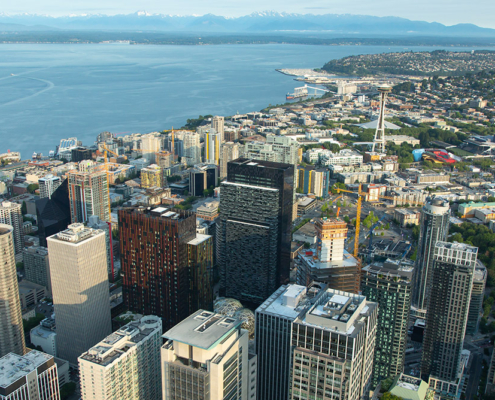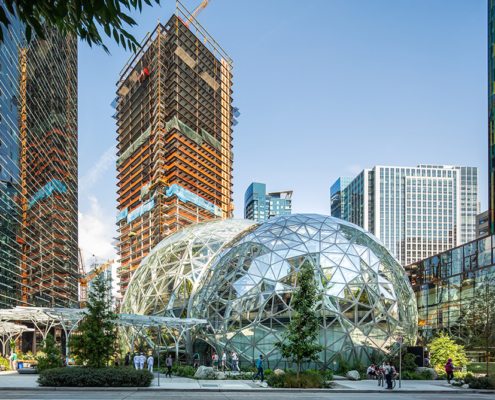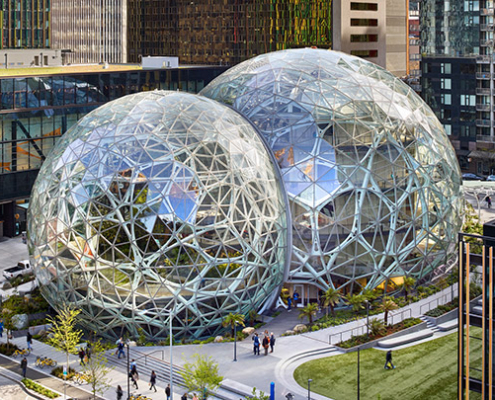Amazon Spheres
"
Most technology companies occupy leafy campuses on the outskirts of urban areas, but Amazon has grown up in the center of Seattle and drawn much of its innovative energy from its big-city location. The giant online retailer’s new headquarters doubles down on its commitment to urban engagement, creating a neighborhood of buildings, plazas, and public open spaces that connects seamlessly with Seattle’s existing metropolitan fabric. The most iconic element is the trio of glass spheres housing a multi-level botanical garden filled with 40,000 plants taken from high-altitude cloud forests from five continents. Set within the landscaped headquarters, the Spheres are a building in a garden and a garden in a building. The plants represent about 400 species, some of which are extinct in the wild and others are quite rare. To select, nurture, and curate the selection of plants, Amazon hired a full-time horticulturalist, Ron Gagliardo, who had previously worked at the Atlanta Botanical Garden. The collection of plants, which will evolve over time, includes a 55-foot-tall fig tree named Rubi, a 40-foot Australian fern, orchids from Ecuador, and carnivorous pitcher plants. Waterfalls and a pair of densely planted living walls create the sense of a jungle. To keep all of this flora happy, the climate in the Spheres is set at 72 degrees Fahrenheit and 60 percent humidity during the day, then shifts to 55 degrees and 90 percent humidity at night. The 67,000-square-foot Spheres represent just two percent of the Amazon project but serve as a magnet to bring people together. Open to Amazon employees, they offer a range of places to meet, work, and dine—from a wood-slatted “birds nest” to terraces with banquettes and chairs. Working with structural engineers at Magnusson Klemencic Associates and NBBJ’s own design computation team, NBBJ architects devised a steel frame made of 180 elongated pentagonal modules inspired by the work of Belgian mathematician Eugène Charles Catalan and defined by the points of five welded arches. While the frame is curved in two directions, the panes of clear, low-iron glass are flat. A 400,000-pound ring beam at the base of the building transfers gravity, wind, and seismic forces from the glass-and-steel façade to concrete columns in the floors below and a central concrete core. The Spheres combine the mathematical and the organic, the pragmatic and the poetic.
"
Information provided in part by: Arch Daily







